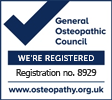As an Osteopath we often come across patients who present with unusual signs and symptoms and our job is then to assess and try to formulate a diagnosis (physiotherapists are generally given the diagnosis) .This week was no different when a lady in her mid 30s presented to Rothery Health Clinic Saundersfoot with hip pain continually which was similar to a dull ache in the region of her groin.There was no sharpness to the pain but it had progressively got worse and was beginning to bother her over a period of a month.
You can have hip impingement for years and not know it, because it is often not painful in its early stages.When hip impingement causes symptoms, it may be referred to as hip impingement syndrome. The main symptoms are stiffness in the groin or front of the thigh and/or a loss of your hip’s full range of motion which this lady was now having.
There are 3 Types of Impingement
There are three types of Impingement: pincer, cam, and combined impingement.
Pincer. This type of impingement occurs because extra bone extends out over the normal rim of the acetabulum or socket. The labrum can be crushed under the prominent rim of the acetabulum.
Cam. In cam impingement the femoral head is not round and cannot rotate smoothly inside the socket. A bump forms on the edge of the femoral head that grinds the cartilage inside causing pain.
Combined. Combined impingement just means that both the pincer and cam types are present.
With this particular lady she was starting to feel pain with more subtle activities, such as sitting for long periods of time or walking up a hills.
On examination it was clear this particular lady had reduced internal rotation of the hip and there was pain. Therefore she was referred back to her GP with a request for an MRI.
Hip Impingement occurs because the hip bones do not form normally during the childhood growing years. It is the deformity of a cam bone spur, pincer bone spur, or both, that leads to joint damage and pain. When the hip bones are shaped abnormally, there is little that can be done to prevent impingement.
Because athletically active people may work the hip joint more vigorously, they may begin to experience pain earlier than those who are less active. However, exercise does not necessarily cause impingement.
Often, surgery for hip impingement can be performed arthroscopically. This technique involves inserting a lighted scope and thin tools through small incisions over your hip instead of making a large incision.Arthroscopy is usually an outpatient surgery. This means you can go home the same day.We will now await the MRI scan however this patient was relieved in the fact that we had given her an answer to her problem and she could now move forward with her life.
If you have any issues please visit our web site www.rotheryhealth.com or call us 07951381265


















